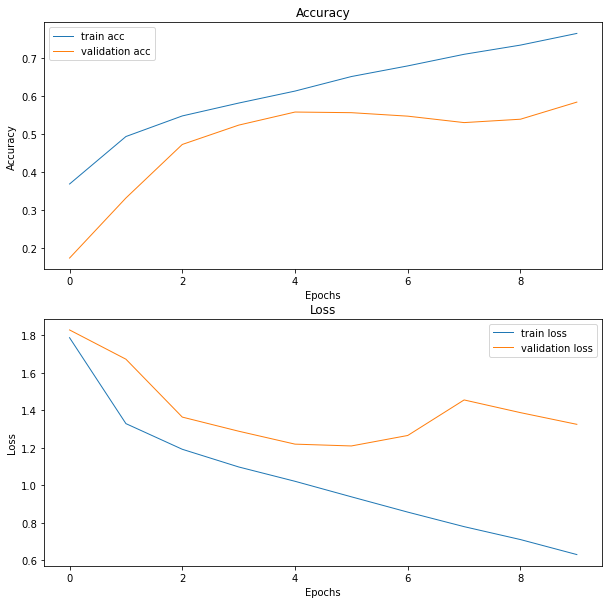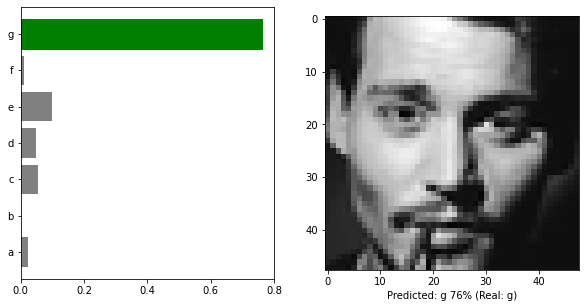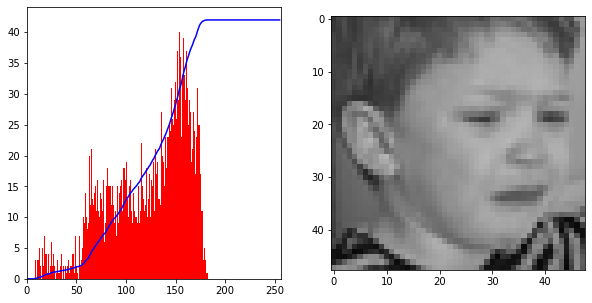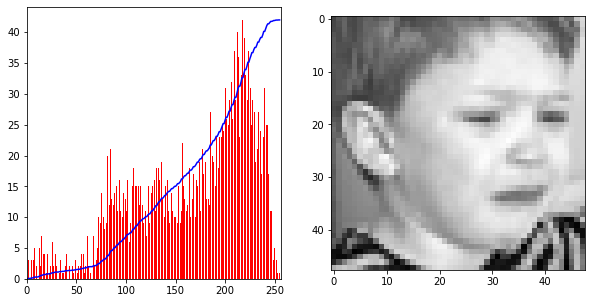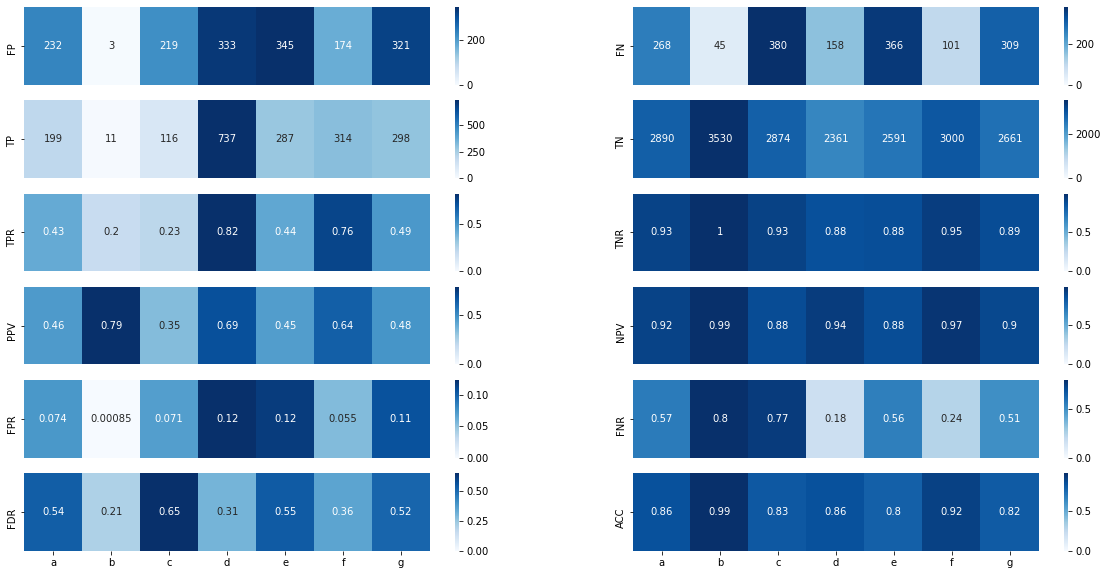Common used code in Keras
Project description
simplified keras
Common used actions in keras
Table of contents
General info
This package is a set of common used actions in keras. At this moment includes:
- Main package
- Plots
- Metrics
- Transformations
Libraries
- Keras - version 2.4.3
- Matplotlib - version 3.3.3
- NumPy - version 1.19.4
- Tensorflow - version 2.4.0rc1
- Pandas - version 1.1.5
- Seaborn - version 0.11.1
Setup
- Install from PyPi:
pip install simplified-keras
Documentation
Main package
Generators
from keras.preprocessing.image import ImageDataGenerator
from simplified_keras.dir_flow_generators import get_train_val_generators
img_size = (48, 48)
img_datagen = ImageDataGenerator(rescale=1/255)
train_generator, validation_generator = get_train_val_generators(img_datagen, data_dir='../data/normal',
color_mode='grayscale', target_size=img_size)
Signature:
def get_train_val_generators(img_datagen: ImageDataGenerator, data_dir='../data', color_mode='rgb',
batch_size=128, class_mode='categorical', **kwargs)
Default callbacks
from simplified_keras.default_callbacks import get_default_callbacks
callbacks = get_default_callbacks('vgg16_calssifier')
hist = model.fit(train_generator, steps_per_epoch=train_steps, validation_data=validation_generator,
validation_steps=valid_steps, epochs=100, callbacks=callbacks, verbose=2)
Signature:
def get_default_callbacks(model_name):
return [
clb.ReduceLROnPlateau(monitor='val_acc', factor=0.5, min_lr=1e-6, patience=3, verbose=1),
clb.EarlyStopping(monitor='val_acc', patience=7, verbose=1),
clb.ModelCheckpoint(monitor='val_acc', filepath=f'../models/{model_name}.h5',
save_best_only=True, verbose=1)
]
Plots
Accuracy and Loss plot
from simplified_keras.plots.history_plots import plot_acc_and_loss
history = model.fit(train_gen, teps_per_epoch=train_steps, epochs=5, validation_data=val_gen,
validation_steps=val_steps, callbacks=callbacks)
fig = plot_acc_and_loss(history)
Result:
Predictions with image plot
from keras.models import load_model
from keras.preprocessing.image import ImageDataGenerator
from simplified_keras.dir_flow_generators import get_train_val_generators
from simplified_keras.plots import plot_predictions_with_img
img_size = (48, 48)
img_datagen = ImageDataGenerator(rescale=1/255)
_, validation_generator = get_train_val_generators(img_datagen, data_dir='../data/normal',
color_mode='grayscale', target_size=img_size)
model = load_model('../models/standard_model.h5')
batch, labels = validation_generator.next()
preds = model.predict(batch)
named_labels = ['a', 'b', 'c', 'd', 'e', 'f', 'g']
fig = plot_predictions_with_img(1, preds, labels, batch, named_labels, grayscale=True)
Result:
Histogram with CDF and image plot
import cv2
from simplified_keras.plots import plot_gray_img_with_histogram
img = cv2.imread(f'{src_train_path}/0/241.png', 0)
fig1 = plot_gray_img_with_histogram(img)
img2 = stretch_histogram(img)
fig2 = plot_gray_img_with_histogram(img2)
Result:
Confusion matrix plot
from simplified_keras.transformations import predictions_to_classes, one_hot_to_sparse
from simplified_keras.metrics import get_confusion_matrixes
from simplified_keras.plots import plot_confusion_matrix
predictions = model.predict(validation_images)
predicted_classes = predictions_to_classes(predictions)
sparse_labels = one_hot_to_sparse(validation_labels)
cm, cm_normalized = get_confusion_matrixes(predicted_classes, sparse_labels)
classes = ['a', 'b', 'c', 'd', 'e', 'f', 'g']
f1 = plot_confusion_matrix(cm, classes)
f2 = plot_confusion_matrix(cm_normalized, classes, figsize=(10, 8))
Results:
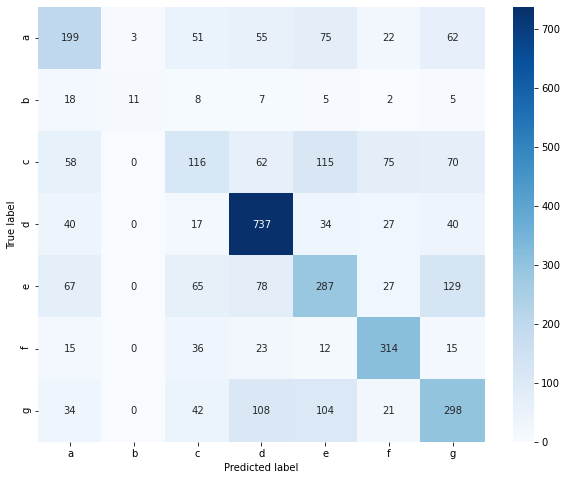
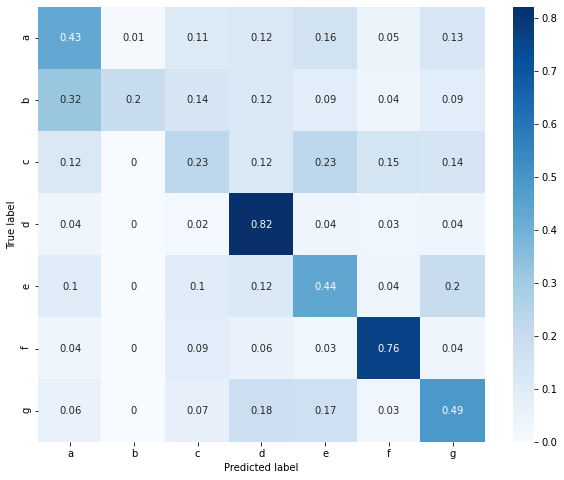
Metrics
Confusion matrix
from simplified_keras.transformations import predictions_to_classes, one_hot_to_sparse
from simplified_keras.metrics import get_confusion_matrixes
predictions = model.predict(validation_images)
predicted_classes = predictions_to_classes(predictions)
sparse_labels = one_hot_to_sparse(validation_labels)
# Returns two numpy arrays: standard and normalized
cm, cm_normalized = get_confusion_matrixes(predicted_classes, sparse_labels)
Model Statistics
Calculates: self.FP self.FN self.TP self.TN
self.TPR # Sensitivity/true positive rate
self.TNR # Specificity/true negative rate
self.PPV # Precision/positive predictive value
self.NPV # Negative predictive value
self.FPR # Fall out or false positive rate
self.FNR # False negative rate
self.FDR # False discovery rate
self.ACC # Overall accuracy for each class
from simplified_keras.transformations import predictions_to_classes, one_hot_to_sparse
from simplified_keras.metrics import get_confusion_matrixes
from simplified_keras.metrics import get_model_statistics
predictions = model.predict(validation_images)
predicted_classes = predictions_to_classes(predictions)
sparse_labels = one_hot_to_sparse(validation_labels)
cm, cm_normalized = get_confusion_matrixes(predicted_classes, sparse_labels)
stats = get_model_statistics(cm)
classes = ['a', 'b', 'c', 'd', 'e', 'f', 'g']
fig = stats.visualize(classes)
print(stats.TN) #[2890 3530 2874 2361 2591 3000 2661]
Folder statistics
from simplified_keras.metrics import get_folders_statistics
stat = get_folders_statistics('../data/normal/train')
print(stat.nr_of_elements, stat.info) # 28709 {'0': 3995, '1': 436, '2': 4097, '3': 7215, '4': 4830, '5': 3171, '6': 4965}
fig = stat.bar_plot()
Result:
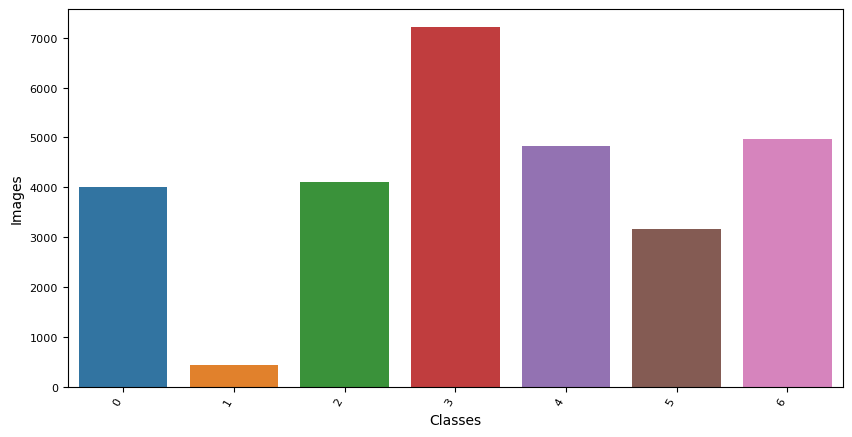
Transformations
Convert predictions to classes array
from simplified_keras.transformations import predictions_to_classes
predictions = model.predict(validation_images)
predicted_classes = predictions_to_classes(predictions)
print(pedicted_classes) #[6 3 3 ... 6 2 0]
Convert one hot encoding to sparse
from simplified_keras.transformations import predictions_to_classes, one_hot_to_sparse
sparse_labels = one_hot_to_sparse(validation_labels)
print(sprase_labels) #[6 6 6 ... 6 2 0]
PyPi
TODO
- nothing :)
Development
Want to contribute? Great!
To fix a bug or enhance an existing module, follow these steps:
- Fork the repo
- Create a new branch (
git checkout -b improve-feature) - Make the appropriate changes in the files
- Verify if they are correct
- Add changes to reflect the changes made
- Commit changes
- Push to the branch (
git push origin improve-feature) - Create a Pull Request
Status
Library is: in progress
Contact
albert.lis.1996@gmail.com - feel free to contact me!
Project details
Release history Release notifications | RSS feed
Download files
Download the file for your platform. If you're not sure which to choose, learn more about installing packages.
Source Distribution
Built Distribution
Hashes for simplified_keras-0.0.4-py3-none-any.whl
| Algorithm | Hash digest | |
|---|---|---|
| SHA256 | c06aa1abcbc088de8591943e0f0b263722373bbd83f1250e3c92268092c0e221 |
|
| MD5 | cc40b091dedd0b81bcb8fc447ddd94cc |
|
| BLAKE2b-256 | afe421e8929f555f1cbfcb3341960ab8f6fcd8ba2863f3df589a32dd4db1fa65 |


